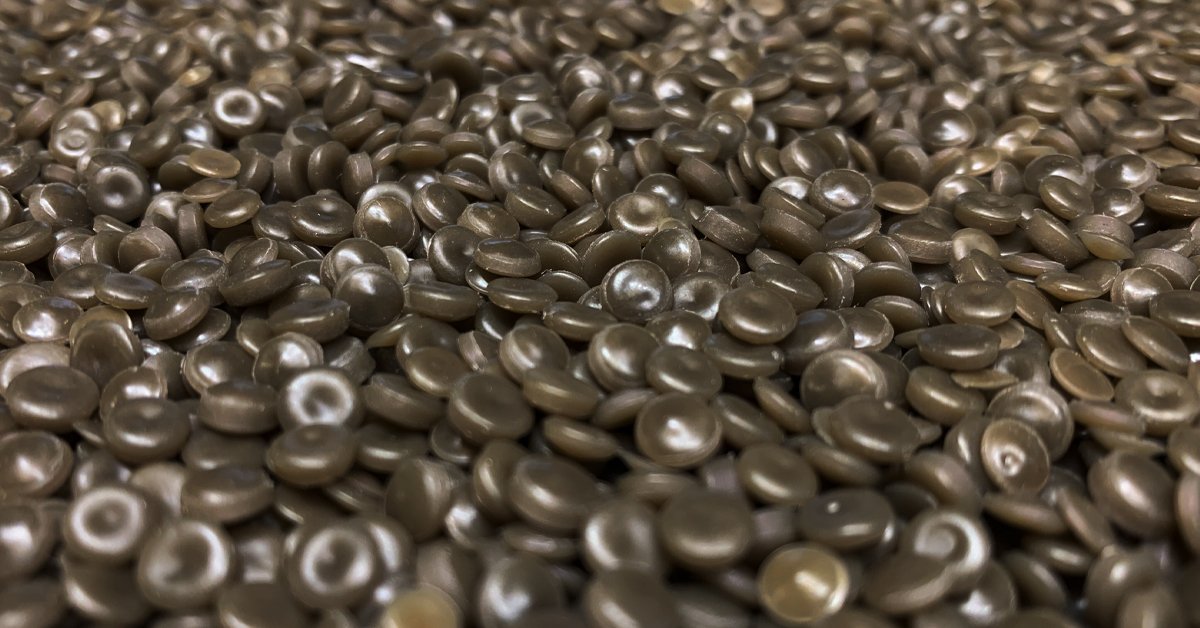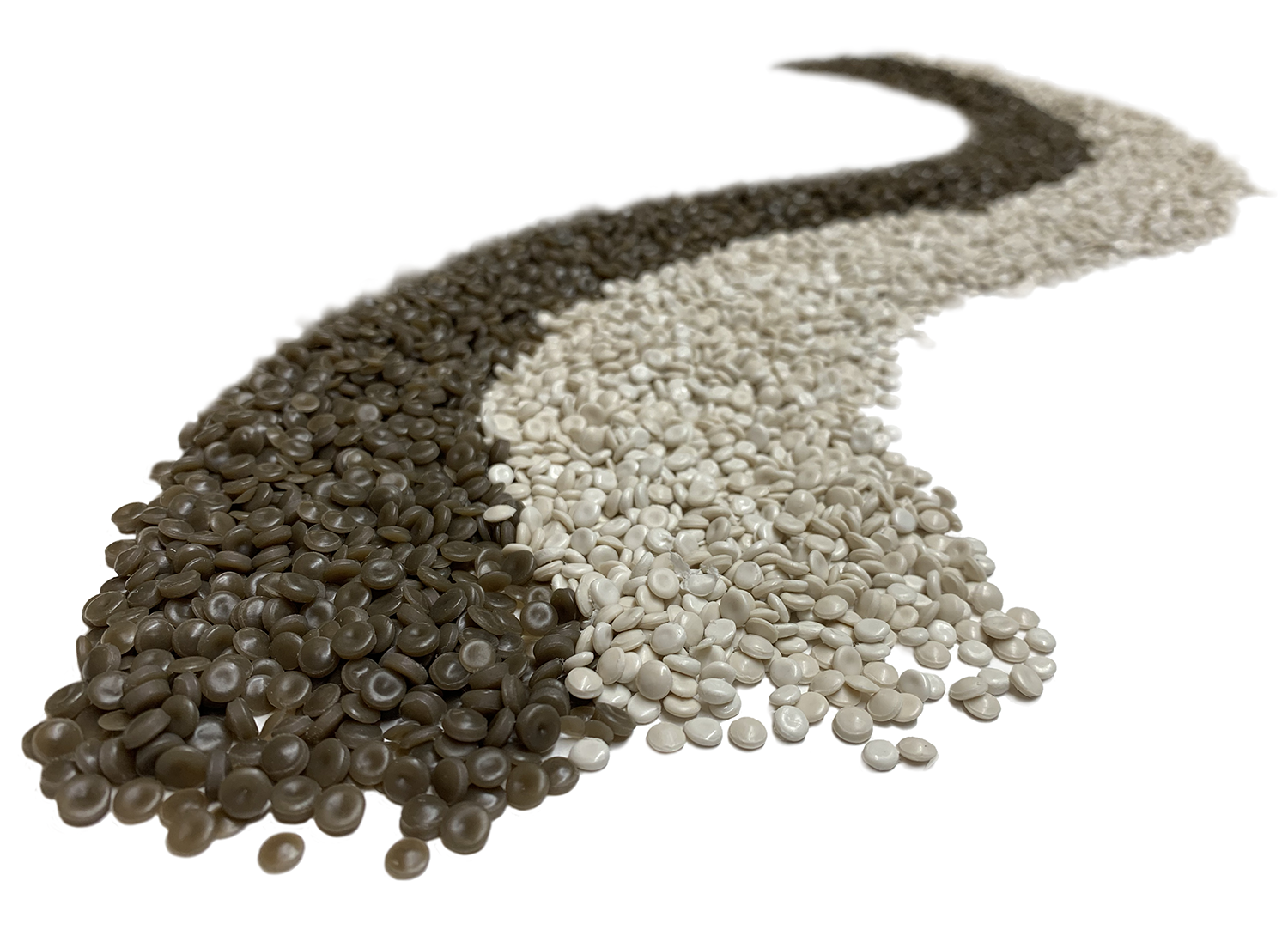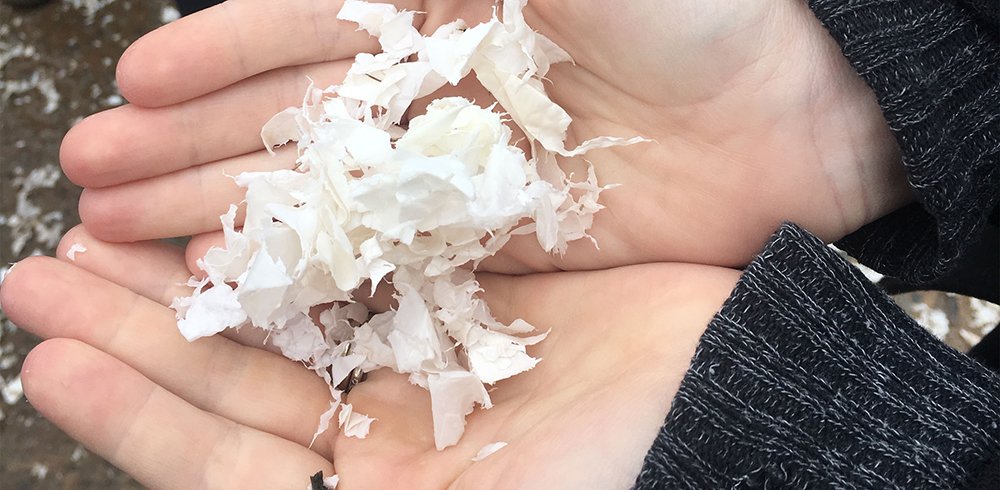
At Revolution, we talk a lot about post-consumer recycled (PCR) materials and their benefits. But when you look at the code on the bottom of your plastic bottle, have you ever wondered what it all means?
What is PCR?
Simply put, PCR plastic materials are created by cleaning and reforming materials from the refuse from consumer goods. Your milk jug, soda bottle, or shrink-wrap gets cleaned and reformed into a material used to make another consumer good. The newly minted items are of the same quality as those produced with raw materials. They just didn’t start as virgin material.
How did PCR reclamation begin?
 Honestly, recycling has been around forever. When something could no longer function in its original capacity, our forefathers would scavenge the pieces to use in other areas. Clothing became rags became pillow stuffing. People have been sorting and reusing items for centuries.
Honestly, recycling has been around forever. When something could no longer function in its original capacity, our forefathers would scavenge the pieces to use in other areas. Clothing became rags became pillow stuffing. People have been sorting and reusing items for centuries.
It was only in the second half of the twentieth century when recycling post-consumer waste came to the forefront. Mostly, this was in response to the consumer culture created after World War II, where people began to discard old items rather than reimagine uses for them.
By the 1970s, the United States began to focus on post-consumer recycling of plastics, glass, and paper products with campaigns like Keep America Beautiful and the development of the now-familiar three-arrow Mobius recycling symbol. Curbside recycling soon followed in the early 1980s. Now, Americans recycle or compost about a third of the waste they generate.
Why Reclaim Plastic?
 But why even bother? The answer is that recycling plastics saves space, energy and provides health benefits to our world.
But why even bother? The answer is that recycling plastics saves space, energy and provides health benefits to our world.
In the 1980s, Americans sent millions of tons of garbage to landfills each year. The space required to house waste on this scale is staggering. Today’s recycling efforts divert around 5.1 billion pounds of plastic waste away from landfills in 2019.
Compared to the production of new plastics from raw materials, recycled PCR resin products result in a 53 percent saving of non-renewable energy sources such as crude oil, natural gas, and uranium compared to raw materials production.
Items in landfills also break down, making a toxic soup called leachate that could drain out of the landfill and contaminate groundwater supplies. Recycling plastics cut down on the amount of leachate generated. It also decreases the carbon dioxide emissions, greenhouse gas emissions, and ground-level ozone exposure that occurs from plastic production using raw materials. All of which is better for the health of the earth’s ecosystems and populations.
Where do we find PCR?
But it isn’t just one-and-done for recycled plastic products. Plastic can go through several recycles before they are downcycled. Downcycling is when recycled material is not as structurally strong as the original product made from virgin material. However, this reincarnation can be used to produce a different commodity. For example, a plastic bottle can be reformed a few times before it doesn’t make a good bottle. However, the recycled plastic is still valuable for making carpet fibers, composite lumber, or fleece textiles.
Today, companies like Revolution provide recycled PCR materials that end up in a variety of familiar products. Because of the meticulous reclamation process, PCR resin can produce thin gauge films. Among the products produced with Revolution’s recycled resins are poly mailers, reusable carryout bags, constuction films, trash liners, bubble wrap, protective films on retail packaging, and pallet wraps.
By responsibly recycling your plastic products, you are doing your part to make the world a better place. Who knew you were so powerful? Want to learn more about Revolution and its recycled plastic resin?
